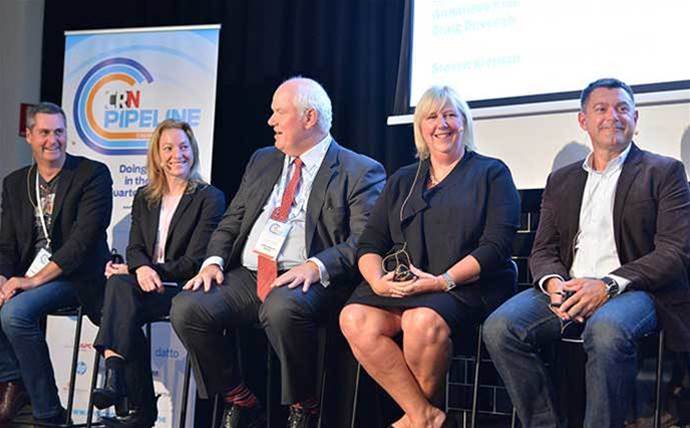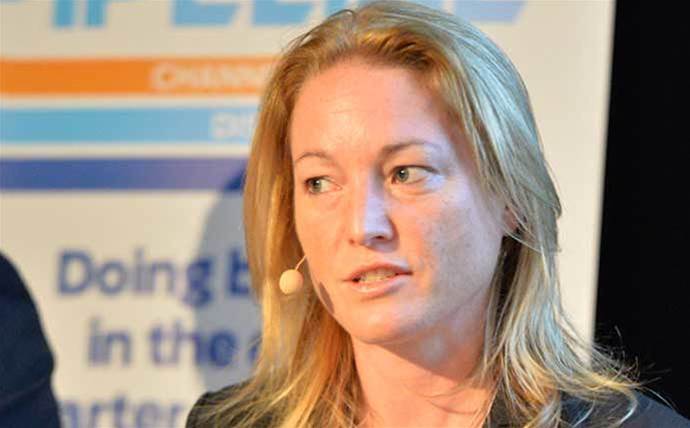Mergers and acquisitions continue to buzz in the channel and M&A remains a key strategy for IT company growth. But deals can be daunting prospects, with careful planning and people skills essential to ensure the journey doesn’t end in disaster.
At the CRN Pipeline conferences in Melbourne and Sydney, a panel of experts from the IT industry and beyond weighed in on their successes – and failures – in M&A.
Julie-Ann Kerin, chief executive of publicly listed CSG, has spent more than 20 years in venture advisory between Melbourne and San Francisco, and now runs the $250 million IT and print provider. CSG has been an active acquirer, most recently snapping up CRN Fast50 company R&G Technologies for $6.6 million. Kerin said the company sought out “bolt-on” acquisitions, where the acquired company offers either customers or capability. “It needs to be one of those two things,” she said.
“In terms of our selection criteria, the number one thing we look at before going any further is the people. We have to believe that the people culturally fit into our organisation, that they share our values, and that they share our objectives for the business. If we don’t get past that point, then we really don’t go any further.”
As a public company with an obligation to shareholders, CSG takes a critical eye to any potential deal. The CEO added that her company valued business leaders with energy, who were willing to proceed forward in partnership. “We would typically want people who are here for the journey, who see themselves as part of the business and have the energy to keep going mid-term. What we’re not attracted to is the tired business owner that just wants a way out.”

While a solid track record of revenue growth is important, earnings accretion is absolutely critical, said Stevens. “We’re constrained in how much we can pay by what the combined profitability of the acquired business, and what your own business is.
“If you are acquiring something that isn’t making the same sort of percentage – EBITDA or net profit – as you are, but you’re paying a similar valuation, then you’re really just diluting the value of your own company.”
Stevens warned of the “key person” risk. Once a founder has sold his or her company and pocketed a sizable payout, they might lose their dedication and drive. “In a lot of the businesses we acquire, there is a founder, and they are generally integral for the business. So the challenge is: how do we then take on that business while giving the founder many millions of dollars that generally tends to dilute their motivation?” Stevens said.
Recently emerging from his second company sale, Craig Deveson recommended building relationships early with those who might buy your business.
Deveson sold his first company to Cloud Sherpas, and only this year sold his second, CloudMGR, to US company Cloudability. “I’ve known the two founders [of Cloudability] for about four years. Start planning to meet your acquirers ahead of time,” he said.
“Talk to your competitors over a drink, because you never know whether you’ll be acquiring them or they’ll be acquiring you. It’s much easier to start that phone call or start that discussion if you’ve had a drink with that person, rather than a call through an investment bank or something like that.”
James Spenceley has headed up some of the biggest deals in the ICT sector over the past decade. He founded Vocus Communications in Perth in 2007, and later listed it on the ASX. In 2015, Vocus merged with another Perth-based telco, Amcom, giving the combined company a market capitalisation of over $1 billion. In 2016, Vocus merged with the M2 Group, before Spenceley resigned later in the year. He now has a new funds management business, MHOR Asset Management.
Spenceley’s advice for businesses looking to sell was to get to know your would-be purchaser. He recommended looking at public documents, such as media releases, to better understand potential buyers and what they are prepared to pay. “With an ASX-listed company, you can go back and see ten or 20 years of records, and see almost every deal they’ve done,” he said.
“We’ve done deals where we were buying pretty much the same assets – a data centre over here and one over there – and we were paying five times [the earnings] for one and four times for the other. They were both exactly the same quality of asset; one just didn’t do the research and notice that we had bought the other for more. If one had come back and said, ‘You’ve paid five times for the other guy,’ he would have had a good case to get us up and we probably would have paid it.”
Peter Dunne is a private equity lawyer with Herbert Smith Freehills, who specialises in M&A and private capital raisings. He lucked onto one of the most high-profile tech operations to come out of Australia when he worked with Atlassian. Dunne was impressed by the research and attention to detail of Atlassian founders Mike Cannon-Brookes and Scott Farquhar when they did a capital raising in 2009.
“I was in a meeting with them once where the tax advisor quoted the [tax] statute, and [co-founder] Scott said, ‘I read it last night and I don’t think it says that.’ Now, I’ve never seen that. I’ve never seen somebody tell the tax guy they had read the tax act. They worked very hard on the deal itself and they worked hard to work out who the partner was going to be.”

Annaliese Kloe, chief executive of NetSuite partner Klugo and joint managing director of Headland Machinery, has seen her share of M&A, both good and bad. One merger that appeared to be a no-brainer became quite the opposite. “We wanted to grow [the machinery business] into the New Zealand market… There’s another partner over there that does exactly what we do and they sell the same products, so we said, ‘Perfect, why don’t we just join up with these guys? Job done.’
“But because we assumed it was so easy, and that it should work and fit – and customers and suppliers were telling us that as well – we didn’t look at some basic stuff, such as cultural fit, values and whether we could work together. We just assumed we could because we do the same stuff, and that’s a really dangerous assumption.
“We acquired 50 percent of that business and it was painful. Do not do that! It’s just not worth the pain or the energy. We cut a deal to get out and sold our share back.”
Kloe said that greed could play a big role in failed deals where one owner is too focused on their own end goals instead of wanting a win-win situation for both parties.

Corporate advisory AFG Venture Group executive John Weste agreed. “I haven’t yet met a business owner or founder that doesn’t think their business is worth at least ten times what it’s worth,” he said.
“I actually worked on a deal 12 months ago that is a good example. It was a cloud-based credit risk solution. We were selling to a publicly listed company that was going through a few issues, and in the end, we decided to pull the pin on the transaction for one reason and one reason only – we could not get the CEO of the acquiring company engaged to have the discussion about what this business was going to do. He handballed it to the CFO or the operations guys every time. In the end, [the chief executive of the credit-risk business] said, ‘If I’m going to work directly with this guy, I need to engage with him, and he’s just not interested,’ so we pulled the pin. We were all set to go – we had lawyers at ten paces and we had spent a lot of money – but just the CEO was just totally disengaged.”
The emerging themes around successful mergers and acquisitions were clear: culture and communication is key, and so was a clear ability to demonstrate mutually beneficial gains. Other key issues include sensible business structures, clear reporting, risk management and realistic valuations. And, of course, honesty is essential.
“There’s no point telling us a whole bunch of stuff about your business that doesn’t substantiate once we go into the data room. That’ll just kill a deal straight away, because once you break trust, there’s nothing else to go forward with,” CSG’s Kerin said.







.jpg&h=142&w=230&c=1&s=1)





.jpg&w=100&c=1&s=0)










